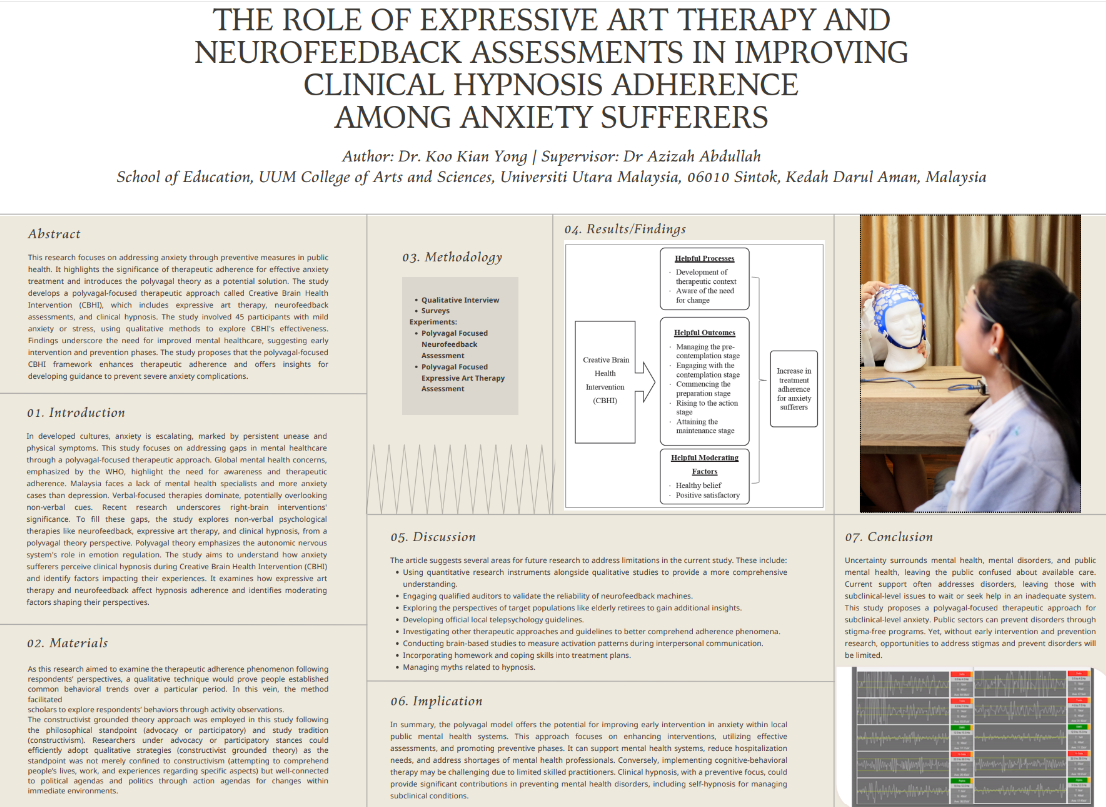
Aims
This research focuses on addressing anxiety through preventive measures in public health. It highlights the significance of therapeutic adherence for effective anxiety treatment and introduces the polyvagal theory as a potential solution. The study develops a polyvagal-focused therapeutic approach called Creative Brain Health Intervention (CBHI), which includes expressive art therapy, neurofeedback assessments, and clinical hypnosis. The study involved 45 participants with mild anxiety or stress, using qualitative methods to explore CBHI's effectiveness. Findings underscore the need for improved mental healthcare, suggesting early intervention and prevention phases. The study proposes that the polyvagal-focused CBHI framework enhances therapeutic adherence and offers insights for developing guidance to prevent severe anxiety complications.
Introduction
In developed cultures, anxiety is escalating, marked by persistent unease and physical symptoms. This study focuses on addressing gaps in mental healthcare through a polyvagal-focused therapeutic approach. Global mental health concerns, emphasized by the WHO, highlight the need for awareness and therapeutic adherence. Malaysia faces a lack of mental health specialists and more anxiety cases than depression. Verbal-focused therapies dominate, potentially overlooking non-verbal cues. Recent research underscores right-brain interventions' significance. To fill these gaps, the study explores non-verbal psychological therapies like neurofeedback, expressive art therapy, and clinical hypnosis, from a polyvagal theory perspective. Polyvagal theory emphasizes the autonomic nervous system's role in emotion regulation. The study aims to understand how anxiety sufferers perceive clinical hypnosis during Creative Brain Health Intervention (CBHI) and identify factors impacting their experiences. It examines how expressive art therapy and neurofeedback affect hypnosis adherence and identifies moderating factors shaping their perspectives.
Views expressed in this article are the views of the writer and not necessarily the views of BACP. Publication does not imply endorsement of the writer’s views. Reasonable care has been taken to avoid errors but no liability will be accepted for any errors that may occur.
